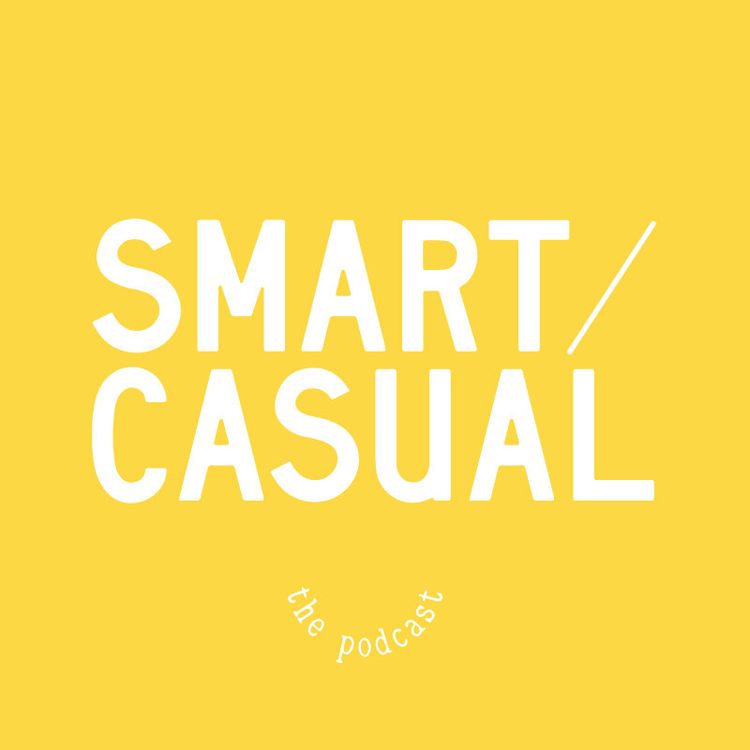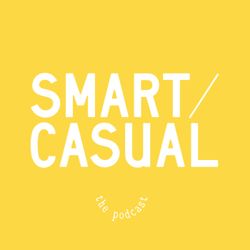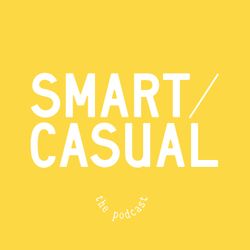Share

Smart Casual Podcast
6. Made in China
Ep. 6
•
What does Made in China mean today? For some shoppers, the phrase throws up images of sweatshops and shoddy quality. Yet, luxury fashion houses like Balenciaga, Prada and Burberry all produce parts of their line in 'the world's factory'. So, are our perceptions of Chinese-made fashion accurate?
Rong Jake Chen – co-creative director for AMXANDER and business director for Jonathan Liang – tells us about why he's proud to make high-end, contemporary clothing in China, and how the manufacturing industry is evolving in surprising ways.
Print designer Imogen* gives us the fast fashion account – sharing her insights on the day-to-day experience of working with Chinese factories for an Australian high street brand.
*Name has been changed.
Further reading (you can find the same links on our Facebook page for ease of reading):
- "Made in China Doesn't Really Mean What It Used to"
https://qz.com/417052/made-in-china-really-doesnt-mean-what-it-used-to/
- "How China Turned Itself From World's Sweatshop to Global Innovator in Just One Decade
https://www.scmp.com/magazines/post-magazine/long-reads/article/2124317/made-china-created-china-how-nation-turned-itself
- "China Moves Factories Back To The Countryside"
https://www.ft.com/content/fe86f76c-1215-11e8-8cb6-b9ccc4c4dbbb
- "China Is Turning Ethiopia Into A Giant Fast Fashion Factory"
https://bloomberg.com/news/features/2018-03-02/china-is-turning-ethiopia-into-a-giant-fast-fashion-factory
Instagram: @smartcasualpodcast
Facebook: Smart Casual Podcast
More episodes
View all episodes

1. Officially missing you (fashion's 'missing middle', Melbourne indie designers of the late 2000s, Vancouver street style)
49:09||Season 2, Ep. 1We're back (for now)! This is an episode about missing: yearning for Melbourne's indie designers of the late 2000s, fashion's 'missing middle' problem (aka why is clothing either $50 or $500?), and maybe most of all, missing each other. Amy now lives in Vancouver, Canada, so we recorded this episode by sending each other voice notes. Topics of discussion:Melbourne's changing independent fashion scene modern modes of dressing: Bratz doll or troll fashion's 'missing middle' price bracket Australia's broader fashion identitycost-cutting production methodsVancouver street styleArticles mentioned:Why Does A Simple Summer Dress Cost So Much Now? – The CutASICS Sportstyle netball campaign
8. 8. #trending
43:30||Ep. 8New year, new episode (finally!). If you've ever wondered how clothing stores end up with a similar set of items each season, this episode is for you. We interview Tully Walter, Sportsgirl's in-house trend forecaster, to find out how fashion trends are birthed and what they say about the social and political mood of the moment. (There's a reason why tie dye is taking off right now and it involves more than Justin Bieber.) Amie then spills the beans on what it's like for her to design clothing under the pressures of our turbo-speed trend cycle. Spoiler: it involves a lot of Zara. Follow us at instagram.com/smartcasualpodcast
7. 7. Fashion fast five
35:48||Ep. 7Long time no see! We're back in the studio to talk about Instagram scams, drop shipping geniuses and Alexa Chung. Elsewhere in the episode, we round up the most enduring 2010 trends and make our predictions for 2020 and beyond (yeehaw!). Plus, what Amie learned from a spreadsheet of her fashion purchases. Instagram: @smartcasualpodcast Facebook: Smart Casual Podcast
5. 5. Secondhand and resale is taking on fast fashion
43:29||Ep. 5No longer just for students and bargain hunters, the secondhand fashion market could very well outpace fast fashion in the next decade according to ThredUp's 2018 report. Brands are catching on, reissuing sought after archive designs in a bid to get a piece of the pie (looking at you, Tommy Hilfiger and FILA). So what does this all mean for our shopping habits? Slow fashion stylist Jenna Flood joins us to talk about the changing nature of secondhand shopping in Australia, the pitfalls of seemingly 'guilt-free' thrifting, and about the helpful role clothing libraries can play in our future retail landscape. Also in this episode: a chat with Liv and Mon of Recycle Boutique Australia on how the consignment store can be an inclusive shopping experience for all, plus a 101 on selling 2000s era 'trash' with Depop-er Tatyana Rutherston. Links: Thread Up report: https://www.thredup.com/resale Join the Tumnus Clothing Library: http://www.tumnusproject.com/ Jenna Flood, The Ironic Minimalist: www.instagram.com/ironicminimalist
4. We talk fashion and gender
44:35|Fashion's latest infatuation is gender-bending, gender-neutral and unisex clothing. But do clothes even have genders? How do you make gender-neutral clothing? We ask Australian fashion labels Seeker x Retriever and JBC Lingerie to weigh in. Then we chat to our mates Andy, Leah and Holly about what shopping is like when you're gender non-conforming. Also in this episode: the origins of that woven straw bag you've been seeing everywhere, why t-shirts and blazers are a combination best left in the 2000s. A quick lowdown on some terms in this episode: unisex clothing: suitable for both sexes (implicitly acknowledges only two genders) gender-neutral / gender free clothing: clothing undefined by any gender cis: short for cisgender. Describes a person whose gender identity corresponds with their birth sex non-binary: a gender identity that is not restricted to either male or female Head to our Facebook page for this episode's further reading list: https://www.facebook.com/smartcasualpodcast/
2. What's holding ethical fashion back? (Part 1)
27:00|In this two-part special, we bring in Sigrid McCarthy of Intent Journal to discuss how ethical and sustainable fashion can win over more consumers. If you've been shopping around for ethically made clothing, you might have noticed a lot of muted linens, loose shapes and classic white shirts floating around. In part one, we get stuck into why ethical fashion looks the way it does, and why prices are still at a premium. We look into the size issue and ask: how can ethical fashion avoid becoming an elitist pursuit? How can brands bring truly accessible, responsibly-made clothing to us all? Enjoy! And as always leave us your feedback on Insta or Facebook @smartcasualpodcast.
3. What's holding ethical fashion back? (Part 2)
23:00|In this two-part special, we bring in Sigrid McCarthy of Intent Journal to discuss how ethical and sustainable fashion can win over more consumers. In the final installment, we offer up a buyer's guide to shopping ethical fashion – because there's many ways to shop responsibly which don't involve saving all your pennies for an organic cotton dress. Sigrid delves into how we can push our favourite brands to be more transparent and gives us tips on how to push back when brands attempt to greenwash. For the designers with small labels listening in – there's a compelling case in here about teaming up with other local labels to streamline production. Enjoy! And as always leave us your feedback on Insta or Facebook @smartcasualpodcast. Link list: First world's secondhand clothing ending up repurposed in Sierra Leone: http://freetownfashpack.com/ Intent Journal: https://www.intentjournal.com/
1. Sales! Sales! Sales!
31:08|Would you buy all your clothes at full price? In our first episode, we hear from Arnsdorf, an Australian brand that’s doing away with sales, and ask whether our collective obsession with discounts is healthy for anyone involved. Also in this episode: Emma wonders what's up with the resurgence of mullets and Amie makes a case for 'menocore' a.k.a dressing like Diane Lane in Under The Tuscan Sun. instagram.com/smartcasualpodcast